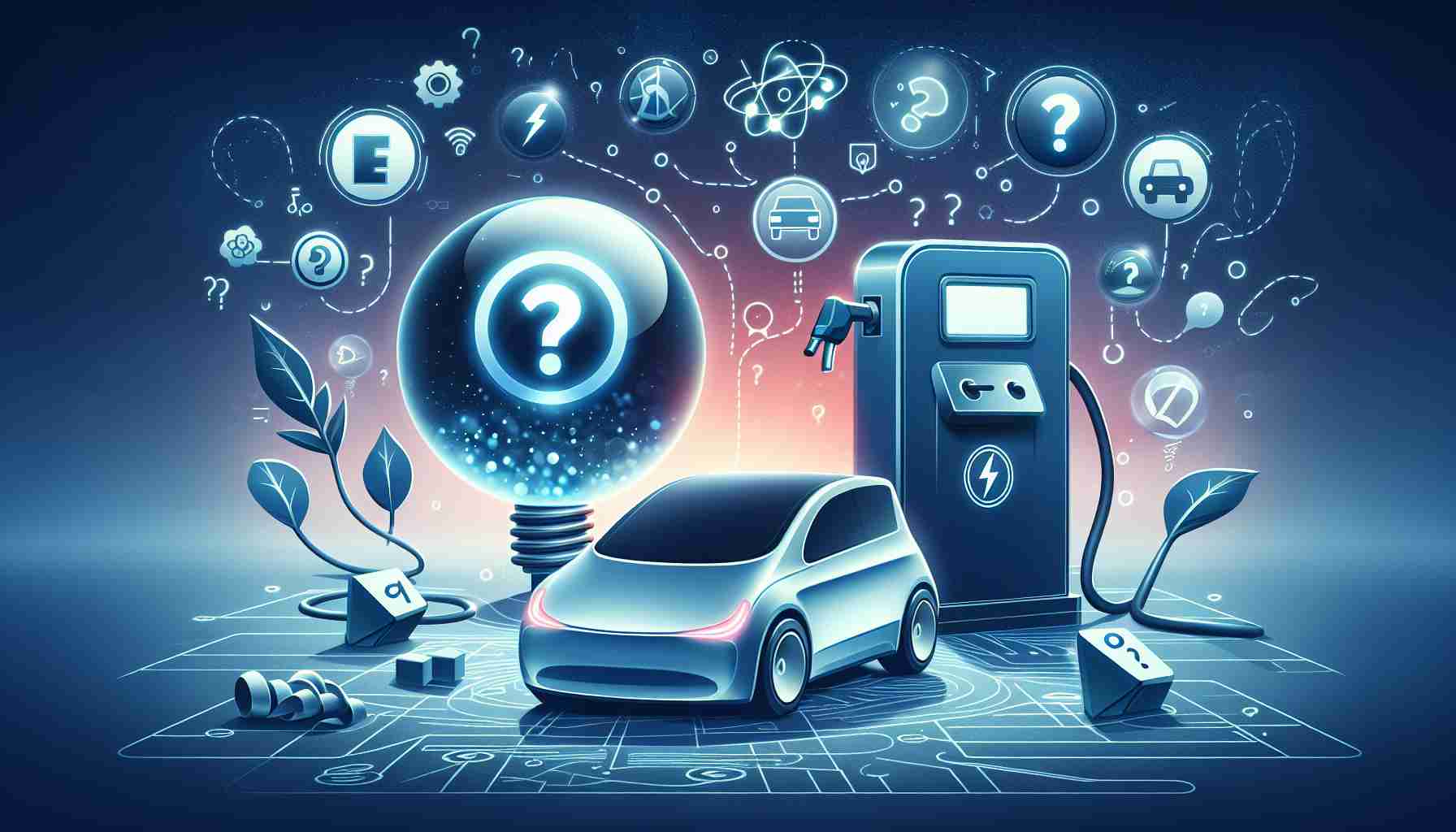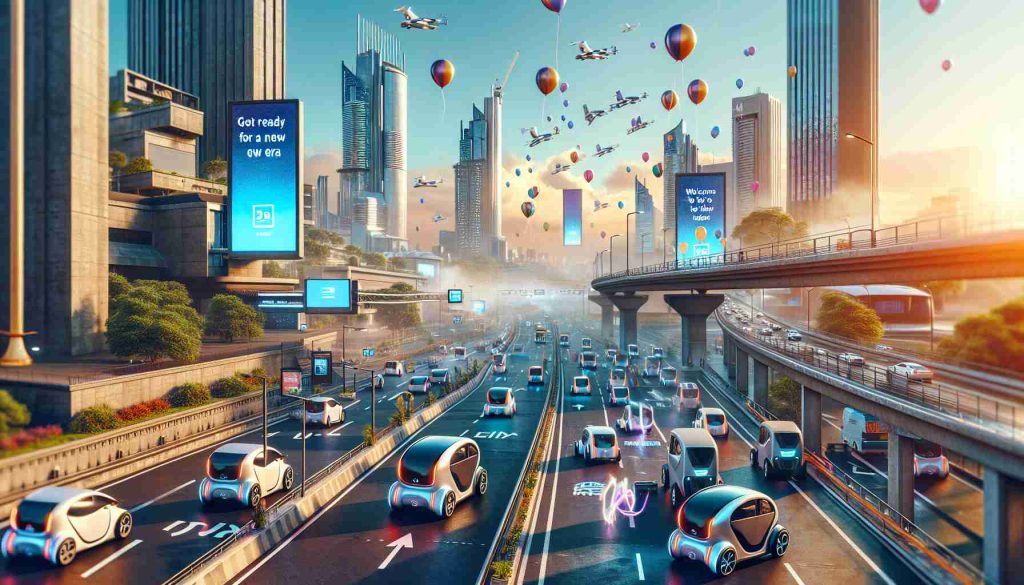The Shift in Electric Vehicle Policy
In an unexpected turn of events, the landscape of electric vehicle (EV) policies in the United States is changing rapidly. Following President Biden’s 2021 initiative, which aimed to dramatically increase the production of EVs and achieve a milestone of zero-emissions vehicles by 2030, the situation has shifted under the Trump administration’s influence.
The Inflation Reduction Act (IRA) initially provided substantial incentives for EV buyers, including a notable $7,500 tax credit, aiming to make electric cars more accessible and less dependent on fossil fuels. However, this approach has caught backlash from the current administration, which is signaling a potential rollback of these green initiatives.
One of the key challenges for EV adoption is the inadequate charging infrastructure. While the U.S. boasts over 3 million electric vehicles, it only has approximately 64,000 public charging stations, many of which fall short in reliability. This makes consumers reluctant to switch from traditional vehicles, despite a gradual increase in sales.
Currently, EVs only account for about 8% of the car market, illustrating slower than anticipated growth. Moreover, cost-related hurdles exist, as the significant requirements for obtaining tax credits could restrict the supply of essential battery minerals, further complicating the economic viability of electric vehicles.
In light of these challenges, the new administration appears to favor a more measured approach, which may ultimately benefit both automakers and consumers. However, this shift raises questions about the nation’s commitment to combating climate change and achieving emission reduction goals.
The Broader Implications of Electric Vehicle Policy Shifts
As the U.S. electric vehicle (EV) policy undergoes a notable transformation, its ramifications extend beyond the automotive sector, influencing societal values, cultural attitudes, and the global economy. The shifting narrative surrounding EV incentives highlights a tension between economic growth and environmental stewardship, marking a critical juncture in the quest for sustainable transportation.
Culturally, the perception of EVs is evolving. As awareness of climate change intensifies, a significant segment of the population advocates for greener technologies. However, policy uncertainty can stifle enthusiasm, leading to mixed perceptions regarding the efficacy of EVs as a solution to environmental issues. The ongoing dialogue around subsidies and incentives may shape public trust in governmental commitments to sustainability.
From an economic perspective, the U.S. is at the cusp of a potential EV renaissance. Investments in battery technology and infrastructure development could stimulate job growth in green sectors and reduce reliance on foreign minerals. Yet, if policy rolls back federal support, investment could dwindle, undermining competitive advantages against nations that prioritize green tech.
Environmental consequences are equally significant. Without robust support for EV infrastructures, including charging stations and battery recycling programs, emissions could surge from stagnant fossil fuel reliance. Future trends may hinge on the success of regional initiatives where states take the lead in promoting EV adoption independently.
Ultimately, these policy adjustments could shape the future of transportation, economy, and climate strategy in profound ways, leaving a lasting impact on both domestic and global scales.
The Future of Electric Vehicles: Navigating Policy Changes and Market Trends
Introduction to the Changing Landscape of Electric Vehicle Policy
The electric vehicle (EV) market in the United States is undergoing a significant transformation, driven by evolving governmental policies and market responses. The previous administration’s initiatives, rooted in environmental sustainability, are now facing reevaluation as new policies emerge.
Key Features of Current Electric Vehicle Policies
1. Tax Incentives and Credits: Originally, the Inflation Reduction Act provided a $7,500 tax credit for EV consumers, making electric cars more appealing financially. However, recent discussions suggest potential adjustments to these incentives, which could influence buyer behavior.
2. Infrastructure Development: As of now, the U.S. has over 3 million electric vehicles but only around 64,000 public charging stations. This highlights the pressing need for enhanced charging infrastructure to support the growing number of EV users and assure prospective buyers of accessibility.
Pros and Cons of Current EV Policies
Pros:
– Increased Accessibility: Tax credits and incentives have made EVs more affordable for a wider audience.
– Market Growth: The growing market share of EVs indicates a move towards cleaner transportation options.
Cons:
– Infrastructure Shortage: The limited number of charging stations can deter potential EV buyers.
– Policy Uncertainty: Frequent changes in policy may confuse consumers and manufacturers, impacting long-term investments.
Comparison of Past and Present EV Initiatives
| Feature | Previous Administration Initiatives | Current Administration Approach |
|—————————-|—————————————|—————————————-|
| Tax Credits | $7,500 incentives | Possible rollback or adjustments |
| Charging Infrastructure Development | Push for expansion | Measured rollout of new initiatives |
| Market Influence | Aggressive growth targets | Cautious optimism |
| Environmental Goals | Ambitious climate objectives | Re-evaluated commitments |
Use Cases for Electric Vehicles
– Urban Commuting: EVs are an excellent solution for city dwellers looking to reduce their carbon footprint.
– Corporate Fleets: Many businesses are adopting electric vehicles to fulfill sustainability goals and reduce operational costs.
– Long-Distance Travel: With increasing charging infrastructure, some newer EV models are designed for long-range travel.
Limitations and Challenges Facing EV Adoption
– Cost Barriers: The upfront price of electric vehicles remains a concern for many consumers, despite tax credits.
– Battery Mineral Supply: The growing demand for EVs has created competition for essential battery minerals, complicating manufacturing logistics and cost.
Market Analysis and Trends
The EV market is currently witnessing a steady growth trajectory, with projections indicating that EVs could comprise up to 20% of the total vehicles sold by 2025. However, achieving this goal heavily depends on addressing infrastructure issues and maintaining favorable financial incentives for buyers.
Innovations in the Electric Vehicle Sector
Innovative technologies are paving the way for enhanced EV performance and sustainability, including:
– Battery Technology: Advancements in solid-state batteries promise longer lifespan and faster charging times.
– Renewable Energy Integration: EV manufacturers are exploring partnerships with renewable energy providers to offer cleaner energy solutions for charging stations.
Security Aspects of Electric Vehicles
As EV technology becomes increasingly sophisticated, cybersecurity has emerged as a critical concern. Manufacturers are now focusing on strengthening software security to protect vehicles from hacking and ensure user data privacy.
Sustainability and Future Predictions
The commitment to reducing carbon emissions remains a vital aspect of EV policies. Projections suggest a continuous push towards EV adoption as part of broader climate initiatives, which may see further government incentives and regulatory frameworks encouraging sustainable practices across the automotive industry.
For more detailed information on the evolving landscape of electric vehicles, visit the U.S. Department of Energy.
















